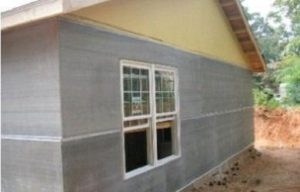A recent series of dynamic tests demonstrates that there are several types and doses of steel-fiber reinforcement that can be used in performance-based seismic design of coupling beams—headers that link openings in concrete shear walls—to reduce rebar congestion. The tests, performed at the University of Wisconsin, are called “a step in the right direction” by the structural engineer who pioneered the use of SFR concrete.
“The results show a way forward for the development of a performance-based specification for steel fiber, as opposed to a product-based spec,” says Cary Kopczynski, CEO of the firm that bears his name. “This will open up the competitive marketplace, which is key to the wider use of SFR concrete in tall buildings.”
In earthquake-prone areas, rebar congestion, especially heavy transverse and diagonal bars in coupling beams, has long bedeviled contractors. Mixing in SFR at the batch plant enhances ductility and shear strength, reducing rebar needs. That can increase constructibility and material performance, says Kopczynski.
Earlier material research was limited to one dose of fiber from one supplier. In the tests at the Wisconsin Structures and Materials Testing Laboratory, Madison, investigators subjected eight fiber-reinforced concrete coupling beams, without diagonal reinforcement, to large displacement reversals. They conducted bending tests, direct tension tests and compression tests, using different fiber doses and strengths.
Nadine Post - ENR
Cement Board

- Cement board substrate attached directly to framing
- Polymer based finish coats in a wide variety of colors, textures and architectural details
- Impact, and puncture resistant for increased durability
- Mold, mildew, and moisture resistant
- Freeze and thaw resistant
- Low maintenance
- Speeds application and reduces labor cost